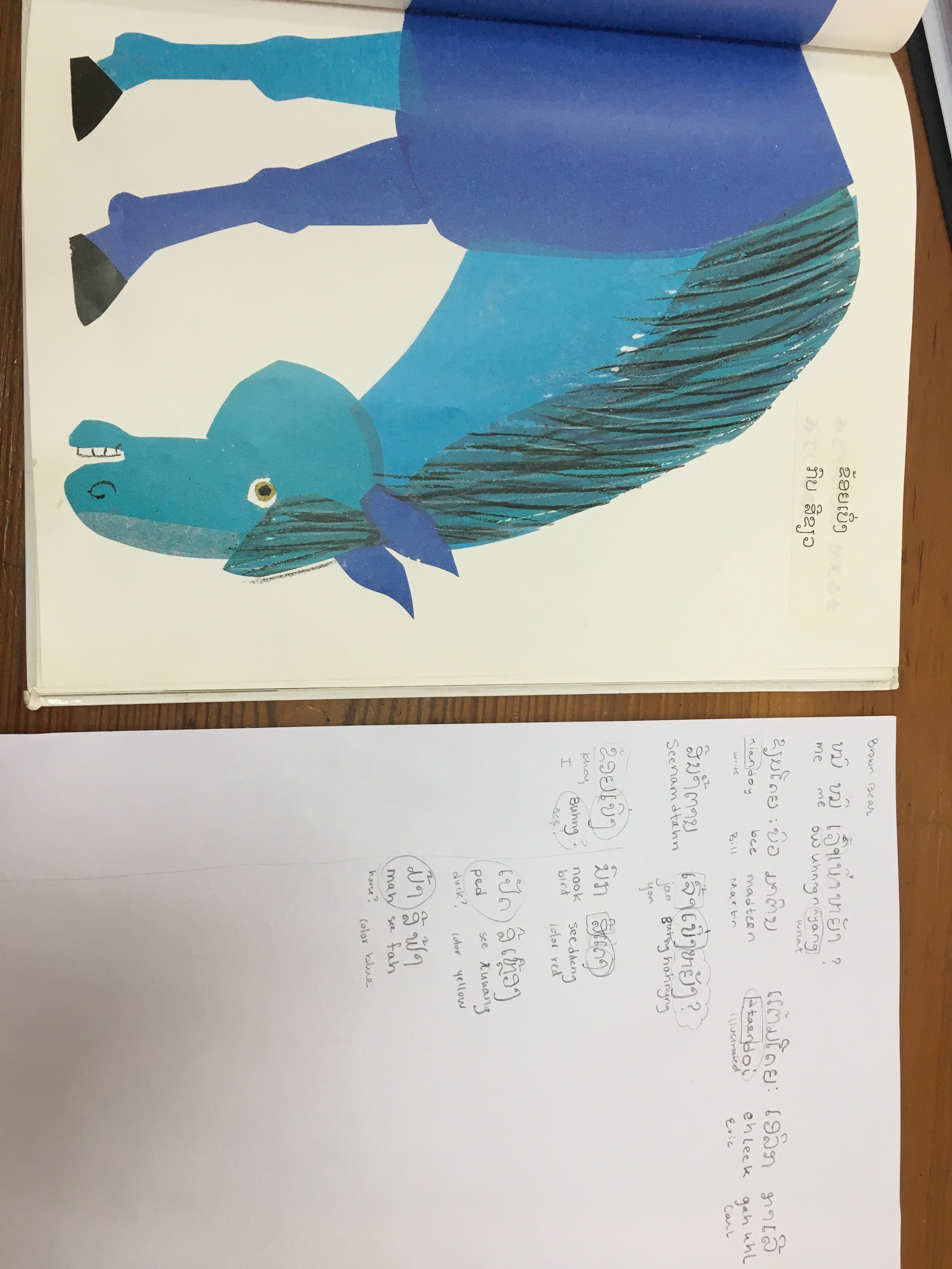ພາສາລາວ - Lao Language
IFIWROTEABLOGPOSTLIKETHISANDYOUHADTODETERMINEWHEREONEWORDENDEDANDANOTHERWORDBEGANTHATMIGHTBEQUITEACHALLENGEIFIALSOONLYUSEDCAPITALLETTERSANDFAILEDTOUSEANYTYPEOFPUNCUTATIONTHATWOULDBEEVENHARDERANDIFFORSOMEREASONQUITUSEANYCONJUGATIONORPRONOUNSBECUASESUPPOSEDTOKNOWWHOSDOINGWHATFROMCONTEXTTHENYOUWOULDSTARTTOUNDERSTANDSOMEOFTHECHALLENGESIVEBEENFACINGTHEPASTMONTHINMYQUESTTOLEARNTHELAOLANGUAGE
The Lao language has only capital letters. It has 27 consonants which each make only one sound. It has 28 vowels, some of which change location and form depending on which consonant they’re next to. Some of the vowels are in front of, on top of, below, behind or a combination of locations around a consonant. Lao is phonetic, tracing it’s origins to Sanskrit, described by Sir William Jones as “More perfect than the Greek, more copious than the Latin, and more exquisitely refined than either.”
But it’s really hard to learn. I’ve never learned a language that didn't use the Roman alphabet and I've never studied a language that uses tones. There are five tones in Lao, three are common and knowing them means being able to tell the difference between the "gai" that means near, the "gai" that means far, and the "gai" that means chicken.
Our teacher is Nipon, a 26 year old Lao woman who has been teaching Lao to English speakers for a mere 5 months. Previously she was a secondary school teacher in social sciences teaching history, geography and political science to Lao students in Lao. Her English is passable but she can't answer complex grammar questions or really explain why the Lao language is how it is. She is as patient as one can be teaching a room of 10 adults what amounts to the ABCs. Sometimes she laughs at our pronunciation. Sometimes she blasts through lessons so quickly I can barely comprehend let alone take notes and understand.
Nipon teaches with big colorful charts of Lao letters and lots of flashcards. We read from our "textbook," a 3-ring binder with a conversation section in the front and a reading and writing section in the back. We took 5 weeks of lessons and covered 18 conversation topics. We learned how to write each consonant and vowel and most miraculously, I learned how to read.
I don’t remember learning how to read English. I learned early and seemingly all at once. I couldn't read and then I could. I don't remember struggling over my ABCs and I don’t remember the lightbulb moment of delight when those squiggles became letters with sound and meaning.
I went to the national library the other day. It’s just down the road from where I teach. I removed my shoes, took a breath and headed for the children’s section. There were three other kids looking at books, giggling and showing each other the pages. I selected a Japanese copy of Brown Bear, Brown Bear. There are not many books printed in Lao. The majority of the picture books had been donated by the Japanese and the Lao librarians pasted the Lao translation over the Kanji. I took Brown Bear to a table, opened up my Lao book and slowly began to read. Letter by letter I sounded out the words. Word by word I put together sentences. I wrote down every word I didn’t know. It took me over an hour. To read a book that in English takes less than 10 minutes.
Click on the image below to see more photos in the slideshow
It was exhilarating. To see symbols that a month ago I couldn’t have discerned and make meaning our of was sheer delight. My brain was tired. I was mentally exhausted, but I did it. And I will keep doing it. I have a tutor in Vientiane for my remaining time in the capital and the name of a tutor who is excited to have me as a student when I get to Savannakhet. I will, I can, I am learning Lao.














